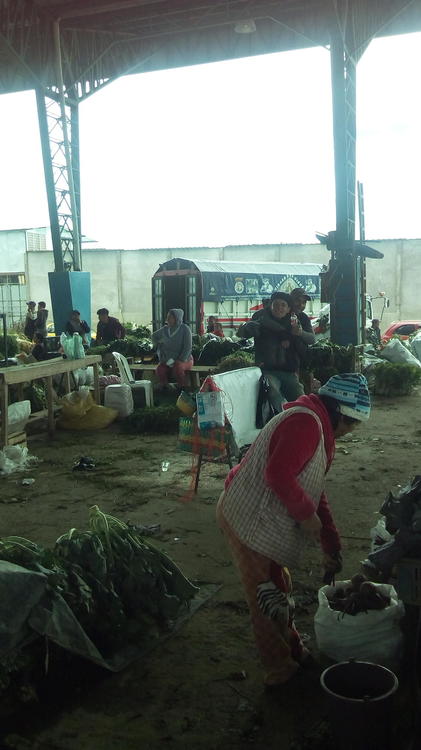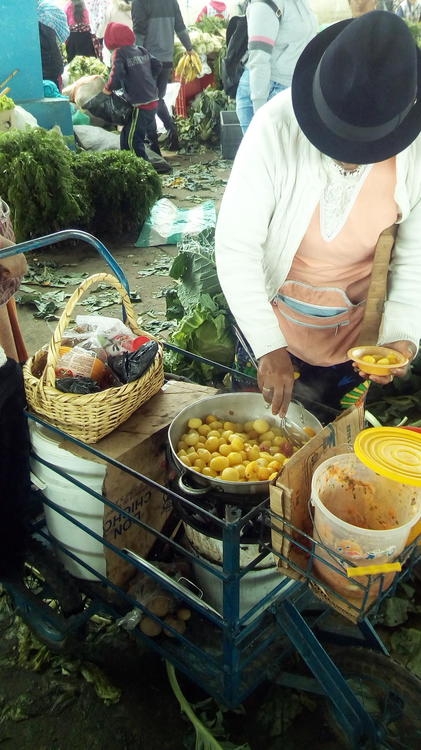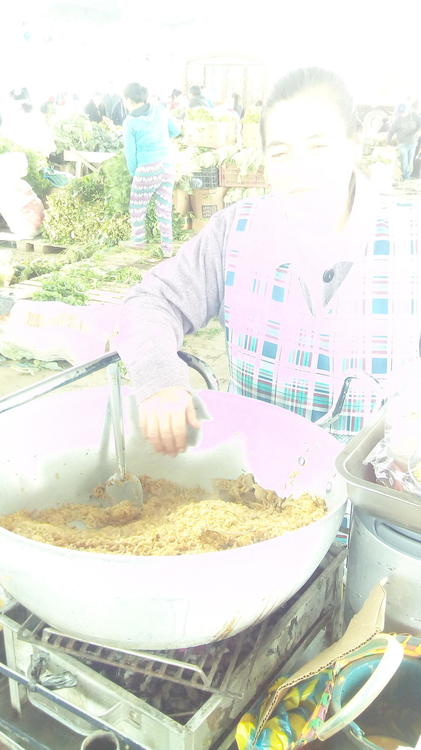Next up, travelling down the rows of roofs, is green vegetables. This is Sierra produce, and includes lettuce, spinach, cress, chard, Napa cabbage, three varieties of "classic" cabbage, broccoli, cauliflower, romanesco, celery, parsley and cilantro, other herbs, peas and beans, and also eggplant, squash, beets, turnips, white carrots, orange carrots, and taro. This video gives you a short look into the nave, which is always bustling.
_svg.png.9983058713e689fea603545ecf00fad1.png)
_svg.png.72cd88dfe3350d6a74595dc4b24108b6.png)
_svg.png.3f024be064c2d8df24226c5ba7bf0f66.png)
_svg.png.327574d9ed989050c0bddea9f9cdd922.png)
(Tungurahua - we are here!). (Cotopaxi) (Cañar) (Chimborazo)
The first photo shows a pair of Venezuelan porters, who make their living carrying 50-100 lb sacks of veggies for buyers. They wanted to be part of this blog, and shout out to the world that even though their country is in crisis, the people are resilient. I'll talk a bit more about the refugee crisis in Ecuador as the blog progresses; as has happened with waves of refugees in the past, it's changing and shaping how the city eats.
The middle photo is something I've wanted to show you all for three blogs now - a Kelly-Kettle potato seller. This is a Kichua dish unique to Tungurahua and Cotopaxi, and consists of tiny new potatoes fried in spiced sausage fat. If I'd had any room left, I'd have bought a bowl because these potatoes are one of the hidden gems of highland street food. Kelly-Kettle sellers are almost all women from highland Kichua tribes; the best and most sought-after ones use a spicy lamb sausage along with the new potatoes. This seller is from Quisapincha, which is uphill from Ambato to the northwest.
On the end is Doña Zoyla Grijalva, the president of the market's ambulatory vendor association, which is called Sabor Ambateño (Ambato Flavour). Every food cart I've shown you in this market is part of this association; it was formed to protect the interests of the sellers, all of whom depend on their food carts to support their families. Doña Zoyla has a big bowl of wood-fired Chaulafán de Pollo (chicken fried rice) which is, oddly enough, a part of Ambato's food canon. The city accepted a wave of Chinese refugees in the late 1800s, and they brought their food traditions along with them, which were adapted to the Ambato palate and became part of the city's traditions.




